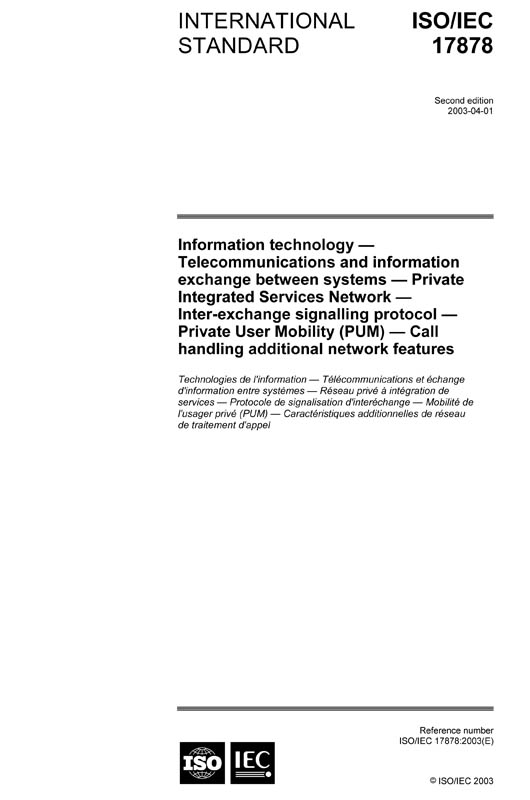ISO/IEC 17878:2003
Information technology - Telecommunications and information exchange between systems - Private Integrated Services Network - Inter-exchange signalling protocol - Private User Mobility (PUM) - Call handling additional network features
Ausgabedatum:
2003-03
Edition:
2.0
Sprache: EN - englisch
Seitenzahl: 50 VDE-Artnr.: 215481
ISO/IEC 17878:2003 specifies the signalling protocol for the support of the Private User Mobility call handling additional network features (ANF-PUMI and ANF-PUMO) at the Q reference point between Private Integrated services Network eXchanges (PINX) connected together within a Private Integrated Services Network (PISN).
ANF-PUMI is a feature that directs incoming calls to a PUM user within the PISN regardless of the PUM user's geographical location within the PISN, provided that the PUM user's location is known.
ANF-PUMO permits the PISN to process call requests from a PUM user at the home location, if required.
The Q reference point is defined in ISO/IEC 11579-1.
Service specifications are produced in three stages and according to the method specified in ITU-T Rec. I.130. ISO/IEC 17878:2003 contains the stage 3 specification for the Q reference point and satisfies the requirements identified by the stage 1 and stage 2 specifications in ISO/IEC 17877.
The signalling protocol for ANF-PUMI and ANF-PUMO operates on top of the signalling protocol for basic circuit switched call control, as specified in ISO/IEC 11572, and uses certain aspects of the generic procedures for the control of supplementary services specified in ISO/IEC 11582.
ISO/IEC 17878:2003 also specifies additional signalling protocol requirements for the support of interactions at the Q reference point between ANF-PUMI/ANF-PUMO and other supplementary services and ANFs.
ISO/IEC 17878:2003 is applicable to PINXs which can interconnect to form a PISN.


